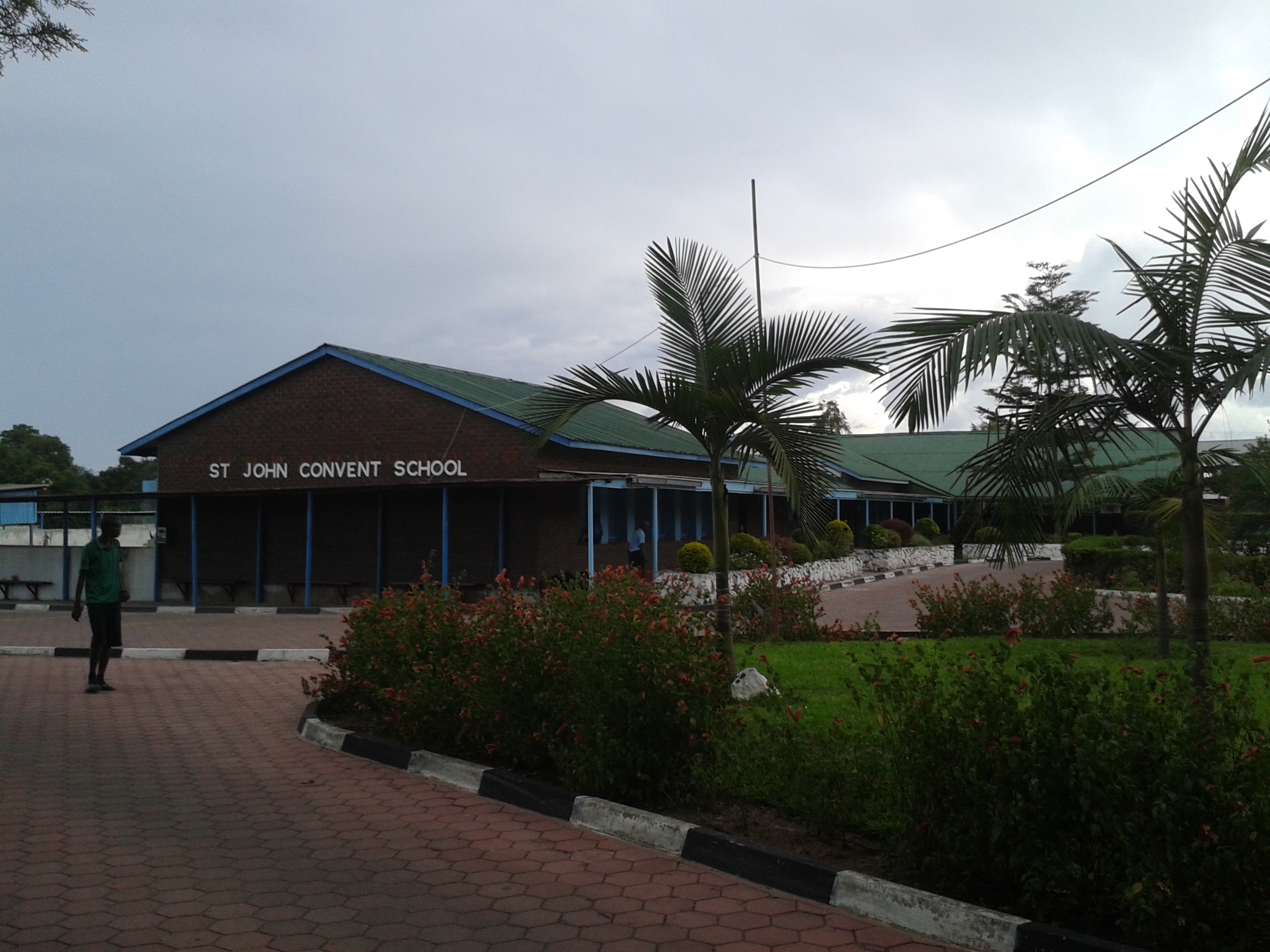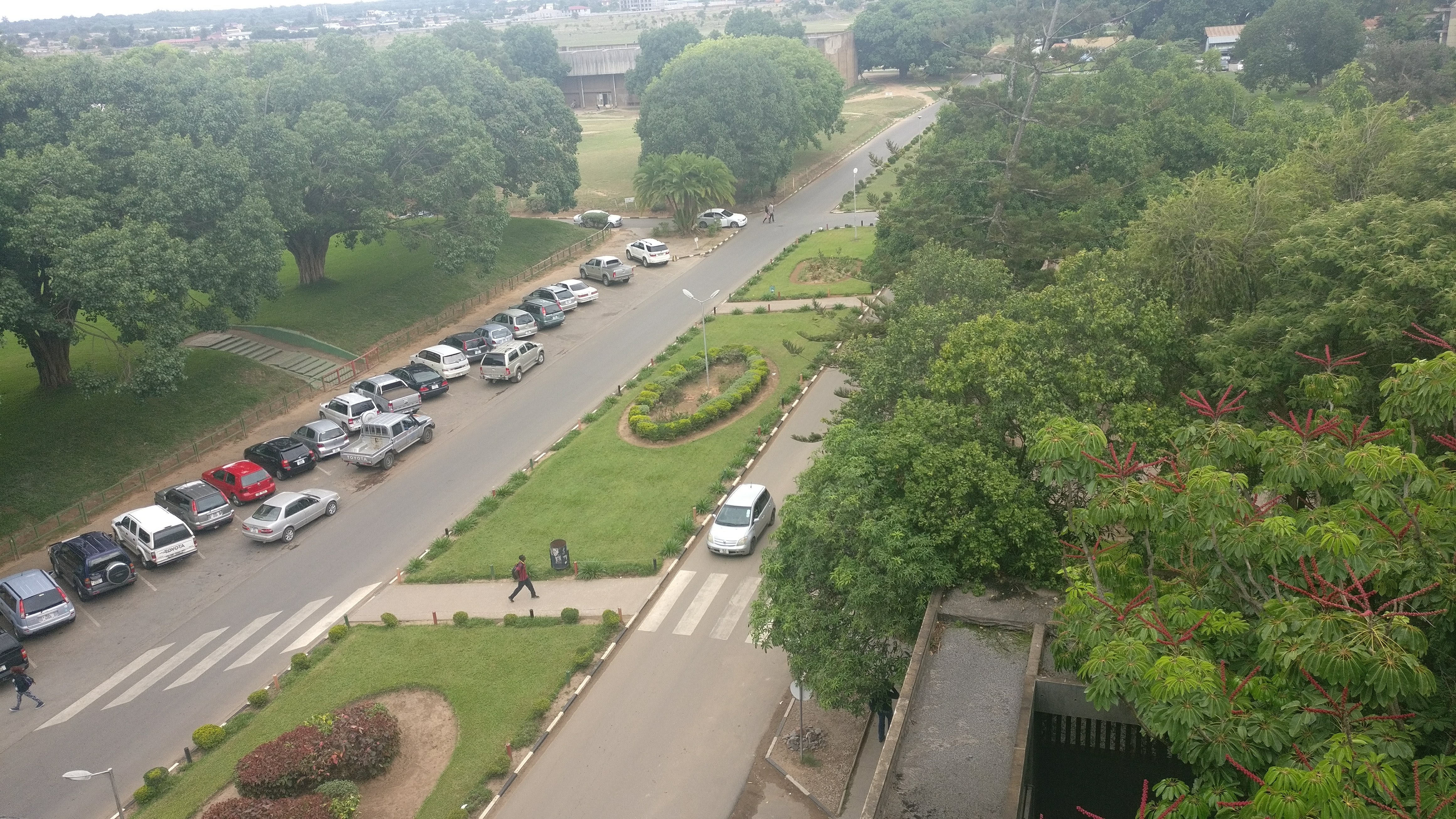|
Kitwe Central Hospital
Kitwe Central Hospital, also known as Kitwe Teaching Hospital, is third level public tertiary referral hospital in Kitwe, Zambia.https://www.znbc.co.zm/news/kitwe-central-hospital-state-irks-masebo/ The hospital has 630 beds. The facility was opened in 1958. Kitwe Central Hospital (KCH) in the Copperbelt Province is one of four teaching hospitals in Zambia. Location The hospital is located along Kuomboka Drive at Plot No. 2831 in Parklands in the City of Kitwe in the Copperbelt Province. It started in 1958 as Llewlyn Hospital, named after Lord Llewelyn, one of the Governors in Northern Rhodesia Northern Rhodesia was a British protectorate in southern Africa, south central Africa, now the independent country of Zambia. It was formed in 1911 by Amalgamation (politics), amalgamating the two earlier protectorates of Barotziland-North-West .... It was changed to Kitwe Central Hospital in 1964 following independence. It is the third level referral hospital serving the second ... [...More Info...] [...Related Items...] OR: [Wikipedia] [Google] [Baidu] |
Kitwe
Kitwe is the third largest city in terms of infrastructure development (after Lusaka and Ndola) and second largest city in terms of size and population (after Lusaka) in Zambia. With a population of 517,543 (''2010 census provisional'') Kitwe is one of the most developed commercial and industrial areas in the nation, alongside Ndola and Lusaka. It has a complex of mines on its north-western and western edges.Google Earth accessed 2007. Kitwe is located in the and is made up of s and |
Copperbelt Province
Copperbelt Province is a province in Zambia which covers the mineral-rich Copperbelt, and farming and bush areas to the south. It was the backbone of the Northern Rhodesian economy during British colonial rule and fuelled the hopes of the immediate post-independence period, but its economic importance was severely damaged by a crash in global copper prices in 1973. The province adjoins the Haut-Katanga province of the Democratic Republic of the Congo, which is similarly mineral-rich. The main cities of the Copperbelt are Kitwe, Ndola, Mufulira, Luanshya, Chingola, Kalulushi and Chililabombwe. Roads and rail links extend north into the Congo to Lubumbashi, but the Second Congo War brought economic contact between the two countries to a standstill, now recovering. It is informally referred to at times as 'Copala' or 'Kopala', invoking the vernacular-like term of the mineral copper that is mined in the province. Demographics As per the 2010 Zambian census, Copperbelt Provinc ... [...More Info...] [...Related Items...] OR: [Wikipedia] [Google] [Baidu] |
University Of Zambia
The University of Zambia (UNZA) is a public university located in Lusaka, Zambia. It is Zambia's largest and oldest learning institution. The university was established in 1965 and officially opened to the public on 12 July 1966. The language of instruction is English. History The beginnings of UNZA can be traced back to before the Second World War when the idea to establish a University in Northern Rhodesia was conceived. However, plans were halted when the war broke out and only revived after. The colonial government instituted plans to set up a Central African University College, for Africa, due to the development of higher education institutions in most parts of Africa. The Central Africa council (CAC) appointed a committee to investigate requirements for a college for higher education and, it subsequently recommended that a college for higher education be established. A subsequent investigation into the need for higher education for Africans in Central Africa was conducted b ... [...More Info...] [...Related Items...] OR: [Wikipedia] [Google] [Baidu] |
List Of Hospitals In Zambia
This is a list of hospitals in Zambia. The list is not exhaustive. You can expand the list by adding referenced content as appropriate. Classification Hospitals in Zambia are divided into four main categories: Specialist Hospitals (forth Level Hospitals), teaching hospitals (third level hospitals) General Hospitals (Provincial Hospitals or Second Level Hospitals), and District Hospitals (First Level Hospitals). Third Level Hospitals As of December 2020, there were six Level 3 hospitals in Zambia. * University Teaching Hospital (1,655 beds), Lusaka * Levy Mwanawasa University Teaching Hospital (826 beds), Lusaka * Ndola Central Hospital (800 beds), Ndola * Kitwe Central Hospital (630 beds), Kitwe * Cancer Diseases Hospital (252 beds), Lusaka * Chainama Hills Mental Hospital (210 beds), Lusaka * Arthur Davison Children's Hospital (250 beds), Ndola. Second Level hospitals As of December 2012, there were 19 Level 2 hospitals in the country. * Levy Mwanawasa General Hospital ... [...More Info...] [...Related Items...] OR: [Wikipedia] [Google] [Baidu] |
Tertiary Referral Hospital
A tertiary referral hospital (also called a tertiary hospital, tertiary referral center, tertiary care center, or tertiary center) is a hospital that provides tertiary care, which is a level of health care obtained from specialists in a large hospital after referral from the providers of primary care and secondary care. Beyond that general definition, there is no precise narrower or more formal definition, but tertiary centers usually include the following: *a major hospital that usually has a full complement of services including pediatrics, obstetrics, general medicine, gynecology, various branches of surgery and psychiatry or *a specialty hospital dedicated to specific sub-specialty care (pediatric centers, oncology centers, psychiatric hospitals). Patients will often be referred from smaller hospitals to a tertiary hospital for major operations, consultations with sub-specialists and when sophisticated intensive care facilities are required. Some examples of tertiary referr ... [...More Info...] [...Related Items...] OR: [Wikipedia] [Google] [Baidu] |
Zambia
Zambia (), officially the Republic of Zambia, is a landlocked country at the crossroads of Central Africa, Central, Southern Africa, Southern and East Africa, although it is typically referred to as being in Southern Africa at its most central point. Its neighbours are the Democratic Republic of the Congo to the north, Tanzania to the northeast, Malawi to the east, Mozambique to the southeast, Zimbabwe and Botswana to the south, Namibia to the southwest, and Angola to the west. The capital city of Zambia is Lusaka, located in the south-central part of Zambia. The nation's population of around 19.5 million is concentrated mainly around Lusaka in the south and the Copperbelt Province to the north, the core economic hubs of the country. Originally inhabited by Khoisan peoples, the region was affected by the Bantu expansion of the thirteenth century. Following the arrival of European exploration of Africa, European explorers in the eighteenth century, the British colonised the r ... [...More Info...] [...Related Items...] OR: [Wikipedia] [Google] [Baidu] |
Northern Rhodesia
Northern Rhodesia was a British protectorate in southern Africa, south central Africa, now the independent country of Zambia. It was formed in 1911 by Amalgamation (politics), amalgamating the two earlier protectorates of Barotziland-North-Western Rhodesia and North-Eastern Rhodesia.''Commonwealth and Colonial Law'' by Kenneth Roberts-Wray, London, Stevens, 1966. P. 753 It was initially administered, as were the two earlier protectorates, by the British South Africa Company (BSAC), a chartered company, on behalf of the British Government. From 1924, it was administered by the British Government as a protectorate, under similar conditions to other British-administered protectorates, and the special provisions required when it was administered by BSAC were terminated.Northern Rhodesia Order in Council, 1924, S.R.O. 1924 No. 324, S.RO. & S.I. Rev VIII, 154 Although under the BSAC charter it had features of a charter colony, the BSAC's treaties with local rulers, and British legisla ... [...More Info...] [...Related Items...] OR: [Wikipedia] [Google] [Baidu] |
Kitwe District
Kitwe District is a district of Zambia, located in Copperbelt Province. The capital is Kitwe. As of the 2000 Zambian Census, the district had a population of 376,124 people. Constituencies Kitwe District is divided into five constituencies, namely Nkana Nkana is a section of the city of Kitwe, Copperbelt Province, Zambia which started off in the early part of the 20th century as a railway station to support the growing complex of copper mining operations. It was named after Chief Nkana, the loc ..., Wusakile, Kamfinsa, Chimwemwe and Kwacha. References Districts of Copperbelt Province {{Zambia-geo-stub ... [...More Info...] [...Related Items...] OR: [Wikipedia] [Google] [Baidu] |
Buildings And Structures In Copperbelt Province
A building, or edifice, is an enclosed structure with a roof and walls standing more or less permanently in one place, such as a house or factory (although there's also portable buildings). Buildings come in a variety of sizes, shapes, and functions, and have been adapted throughout history for a wide number of factors, from building materials available, to weather conditions, land prices, ground conditions, specific uses, prestige, and aesthetic reasons. To better understand the term ''building'' compare the list of nonbuilding structures. Buildings serve several societal needs – primarily as shelter from weather, security, living space, privacy, to store belongings, and to comfortably live and work. A building as a shelter represents a physical division of the human habitat (a place of comfort and safety) and the ''outside'' (a place that at times may be harsh and harmful). Ever since the first cave paintings, buildings have also become objects or canvasses of much artistic ... [...More Info...] [...Related Items...] OR: [Wikipedia] [Google] [Baidu] |
Hospitals In Zambia
A hospital is a health care institution providing patient treatment with specialized health science and auxiliary healthcare staff and medical equipment. The best-known type of hospital is the general hospital, which typically has an emergency department to treat urgent health problems ranging from fire and accident victims to a sudden illness. A district hospital typically is the major health care facility in its region, with many beds for intensive care and additional beds for patients who need long-term care. Specialized hospitals include trauma centers, rehabilitation hospitals, children's hospitals, seniors' (geriatric) hospitals, and hospitals for dealing with specific medical needs such as psychiatric treatment (see psychiatric hospital) and certain disease categories. Specialized hospitals can help reduce health care costs compared to general hospitals. Hospitals are classified as general, specialty, or government depending on the sources of income received. A teaching ... [...More Info...] [...Related Items...] OR: [Wikipedia] [Google] [Baidu] |
Hospitals Established In 1958
A hospital is a health care institution providing patient treatment with specialized Medical Science, health science and auxiliary healthcare staff and medical equipment. The best-known type of hospital is the general hospital, which typically has an emergency department to treat urgent health problems ranging from fire and accident victims to a sudden illness. A district hospital typically is the major health care facility in its region, with many beds for intensive care and additional beds for patients who need long-term care. Specialized hospitals include trauma centers, rehabilitation hospitals, children's hospitals, seniors' (geriatric) hospitals, and hospitals for dealing with specific medical needs such as psychiatry, psychiatric treatment (see psychiatric hospital) and certain disease categories. Specialized hospitals can help reduce health care costs compared to general hospitals. Hospitals are classified as general, specialty, or government depending on the sources of ... [...More Info...] [...Related Items...] OR: [Wikipedia] [Google] [Baidu] |
Buildings And Structures Completed In 1958
A building, or edifice, is an enclosed structure with a roof and walls standing more or less permanently in one place, such as a house or factory (although there's also portable buildings). Buildings come in a variety of sizes, shapes, and functions, and have been adapted throughout history for a wide number of factors, from building materials available, to weather conditions, land prices, ground conditions, specific uses, prestige, and aesthetic reasons. To better understand the term ''building'' compare the list of nonbuilding structures. Buildings serve several societal needs – primarily as shelter from weather, security, living space, privacy, to store belongings, and to comfortably live and work. A building as a shelter represents a physical division of the human habitat (a place of comfort and safety) and the ''outside'' (a place that at times may be harsh and harmful). Ever since the first cave paintings, buildings have also become objects or canvasses of much artistic ... [...More Info...] [...Related Items...] OR: [Wikipedia] [Google] [Baidu] |





